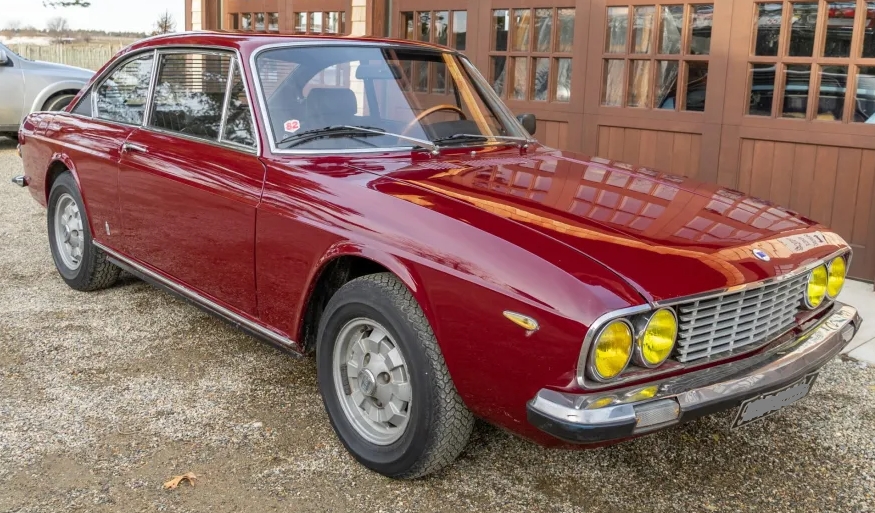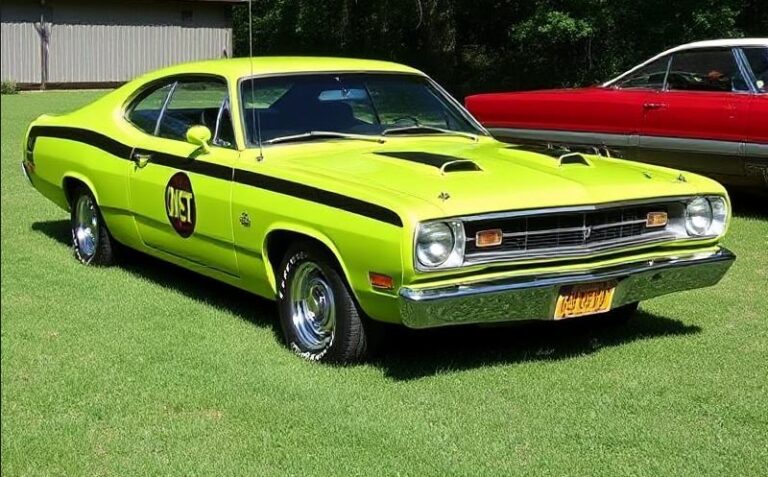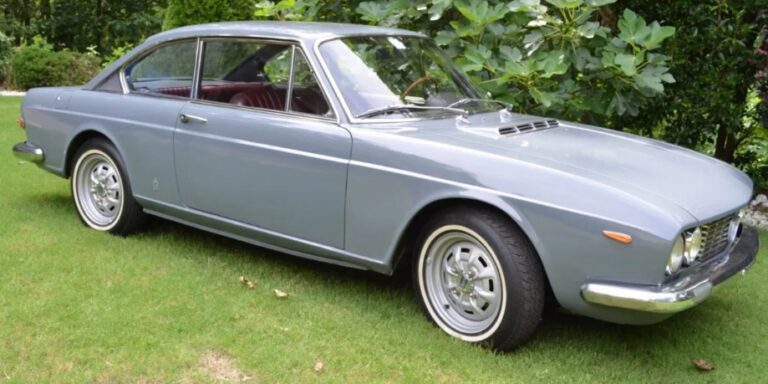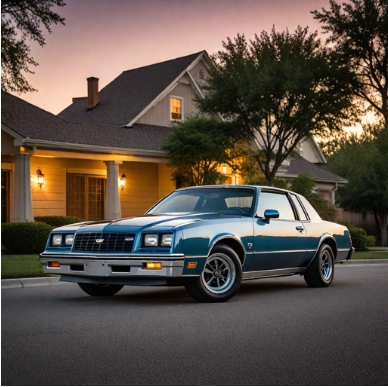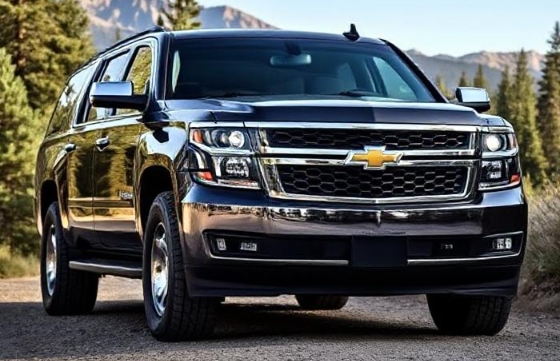The Lancia 2000: A Bridge Between Eras
In the grand, often dramatic, history of Lancia, certain models shine with the brilliance of motorsport victory or revolutionary design. The Stratos, the Fulvia, the Delta Integrale—these are the icons that command immediate recognition. Yet, nestled between the final chapter of Lancia’s fiercely independent engineering and the dawn of its Fiat-controlled future lies a car of quiet distinction and profound significance: the Lancia 2000. Produced from 1971 to 1974, the 2000 was not a revolution, but an evolution; a final, loving refinement of a platform that embodied everything the company stood for—engineering integrity, understated elegance, and a dedication to quality that bordered on the obsessive. This is the story of the last of the old guard.
The Genesis: A Flavia in Modern Garb
To understand the Lancia 2000, one must first understand its predecessor, the Flavia. Launched in 1961, the Flavia was a masterpiece of engineering from the legendary Professor Antonio Fessia. It featured a boxer-four engine, front-wheel drive, and four-wheel disc brakes—a combination that was exceptionally advanced for its time. Over its ten-year lifespan, the Flavia evolved through two series, gaining more powerful engines and refined styling. By the late 1960s, however, its design was beginning to age, and Lancia itself was in financial turmoil.
In 1969, Fiat acquired the struggling but prestigious automaker. This takeover created an immediate dilemma. Fiat needed to streamline Lancia’s notoriously expensive production methods, but it also needed to preserve the brand’s upmarket appeal and engineering credibility. A brand-new replacement for the Flavia was already in development (which would become the Lancia Beta), but it was still several years away. An interim solution was needed to keep the flagship sedan segment occupied.
The task fell to Lancia’s stalwart engineer, Sergio Camuffo. His brief was to create a car that was modern enough to compete in the 1970s, yet utilized the existing Flavia platform to control costs. The result, launched at the 1971 Geneva Motor Show, was the Lancia 2000. While mechanically it was a direct descendant of the Series II Flavia, its visual and philosophical identity was its own. It was a car designed to be a bridge, carrying the old Lancia values forward into a new, uncertain era.
.

.
The Lancia 2000 Berlina (1971-1974)
The first model to be introduced was the four-door saloon, or Berlina. The styling was a significant departure from the Flavia’s more rounded, 1960s aesthetic. The 2000 Berlina was taught, linear, and resolutely contemporary. The front end was dominated by a wide, horizontal grille and large rectangular headlamps, giving it a more imposing and formal presence. The waistline was raised, and the glasshouse was generous, creating a bright and airy cabin. The rear was tidied up with simple, elegant horizontal tail lights. The overall effect was one of sober, professional confidence—a car for a successful doctor, architect, or businessman.
Beneath the new skin, however, the engineering was pure, classic Lancia. The engine was the final evolution of Fessia’s boxer-four, enlarged to 1991cc. This flat-four configuration provided a low centre of gravity, contributing to the car’s excellent stability and handling, while also being exceptionally smooth. It was mounted ahead of the front axle, driving the front wheels through a new, standard five-speed manual gearbox—a premium feature at the time.
The Berlina was offered in two distinct versions throughout its production run:
1. Lancia 2000 (Carburetor): This was the standard model, powered by the 1991cc boxer engine fitted with a double-barrel Solex carburetor. It produced a healthy 115 CV (cheval-vapeur, or metric horsepower). This version was praised for its remarkable smoothness and flexibility. It wasn’t a sports car, but its ample torque made for effortless cruising and confident overtaking. It was the quintessential “gran turismo” saloon, designed for covering long distances in supreme comfort.
2. Lancia 2000 Iniezione (Fuel Injection): For customers seeking more performance and technological sophistication, Lancia offered a fuel-injected version. This model used a Bosch D-Jetronic electronic fuel injection system, a highly advanced piece of equipment for a mainstream saloon in 1972 (when it was introduced). The injection system boosted power to 125 CV, reduced fuel consumption, and improved throttle response. The “Iniezione” models were externally distinguishable only by a small badge on the rear, maintaining their discreet character.
The Lancia 2000’s true trump card was its interior and its ride quality. The cabin was a masterclass in Italian craftsmanship. The dashboard was faced with real wood veneer, the instruments were clear and comprehensive, and the seats were trimmed in high-quality velour or optional leather. Attention to detail was everywhere, from the tactile switchgear to the thoughtfully padded surfaces.
The car’s road manners were exemplary. It retained the Flavia’s suspension layout—independent at the front with a transverse leaf spring, and a solid axle on semi-elliptical leaf springs at the rear. While the rear setup sounds dated, it was expertly located and damped, providing a superb ride that absorbed road imperfections without ever feeling floaty. Combined with Lancia’s famous “Superduplex” four-wheel disc braking system and precise ZF power steering (standard on later models), the 2000 was an incredibly secure and relaxing car to drive.
The Lancia 2000 Coupé and HF Coupé (1971-1974)
Alongside the Berlina, Lancia unveiled the 2000 Coupé. Unlike the saloon, the Coupé was not a new design but rather a subtle and clever update of the breathtakingly beautiful Pininfarina-designed Flavia Coupé. Pininfarina was tasked with modernizing its own creation, and it did so with a light touch.
The elegant, pillarless glasshouse and perfect proportions of the Flavia Coupé were retained. The updates were minor but effective: the chrome grille was replaced with a simpler matte black version, slender rubber strips were added to the bumpers for a more modern look, and the rear tail lights were updated to match the Berlina’s aesthetic. The result was a car that seamlessly blended timeless 1960s elegance with early 1970s details.
Like the Berlina, the Coupé was offered with the 1991cc boxer engine and five-speed gearbox. Two distinct trim levels were available:
1. Lancia 2000 Coupé (Carburettor): This was the standard Coupé, equipped with the 115 CV carburetted engine. It was pitched as a luxurious and comfortable grand tourer. Mechanically identical to its saloon counterpart, it offered a slightly more engaging driving experience due to its lower weight and more aerodynamic profile. The interior was again a highlight, with the same high-quality materials and construction as the Berlina.
2. Lancia 2000 HF Coupé (Iniezione): This was the flagship of the entire 2000 range and the most desirable model for collectors today. The “HF” (High Fidelity) badge, legendary from Lancia’s rally-winning Fulvias, signified the sportiest intentions. The 2000 HF Coupé was fitted exclusively with the 125 CV fuel-injected engine. This engine transformed the car from a beautiful cruiser into a genuinely brisk performer, capable of competing with rivals like the Alfa Romeo 2000 GTV and BMW 2002 tii.
The HF was more than just an engine upgrade. It featured stylish magnesium alloy wheels from Cromodora, a sporty wood-rimmed steering wheel, and often came in more vibrant colour palettes. The juxtaposition of its elegant, almost delicate Pininfarina bodywork with the potent, fuel-injected engine and sporting details made the 2000 HF Coupé a true gentleman’s express.
Production, Demise, and Legacy
The Lancia 2000 remained in production until late 1974, with some cars being registered into 1975. Its market reception was respectable but not spectacular. It was praised by journalists for its refinement, build quality, and comfort, but it was also an expensive car. It had to compete against the sportier Alfa Romeo 2000 Berlina and the dynamically superb BMW 2000-series. The Lancia carved its own niche as the comfort-oriented choice, but its high cost—a remnant of Lancia’s old-world manufacturing processes—hampered sales volume.
In total, approximately 14,319 Berlinas were built. The Coupé was far rarer, with only 1,399 examples produced, making the 2000 HF Coupé an exceptionally scarce machine.
The end for the Lancia 2000 came with the full arrival of its intended successor, the Lancia Beta. Launched in 1972, the Beta was a thoroughly modern car built using Fiat parts-bin components (including its DOHC inline-four engine) to keep costs down. As Beta production ramped up, the complex and expensive-to-build 2000 became redundant. It was quietly phased out, marking the definitive end of the Flavia/2000 platform and the boxer engine in a Lancia saloon.
Today, the Lancia 2000 is often overlooked, lost in the shadow of more famous Lancias. Yet, its legacy is undeniable. It represents the final, heartfelt expression of Lancia’s pre-Fiat identity. It was a car built with a profound commitment to engineering for its own sake, where the smoothness of the engine and the quality of the interior trim were considered just as important as outright performance. It was a bridge that gracefully carried the soul of an independent Lancia into a new corporate world, before that soul was ultimately and irrevocably changed. For those who appreciate its subtle charms, the Lancia 2000 is not just a classic car; it’s the beautiful, elegant swan song of an era.
